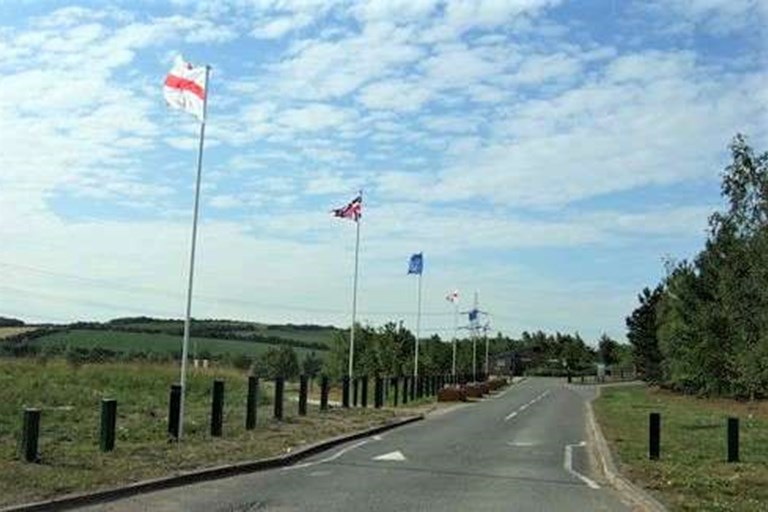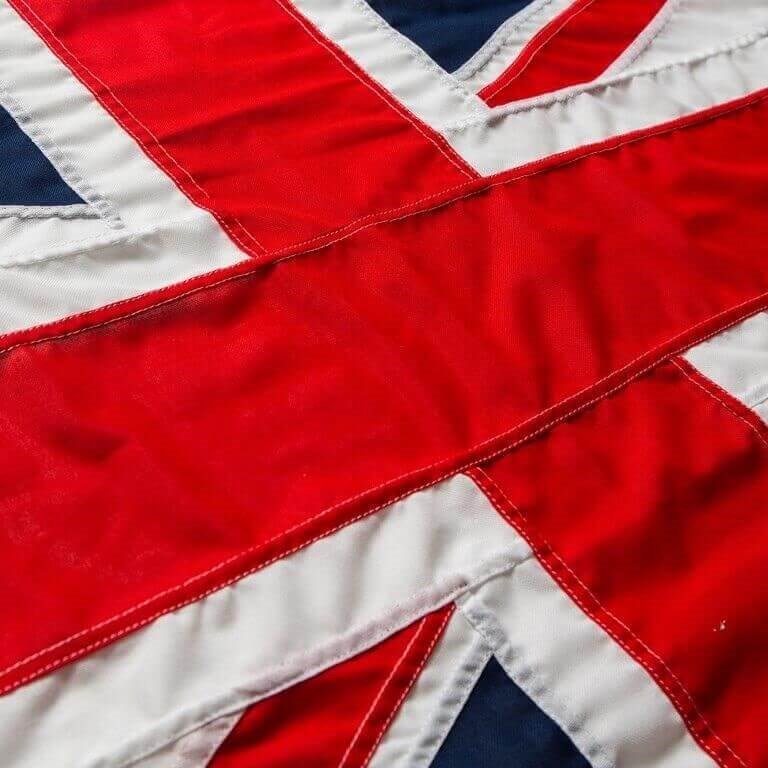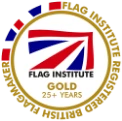Across the world, the LGBTQ+ community celebrates its heritage and history with all sorts of flags. As well as the evolution and ongoing developments with the traditional rainbow LGBT flag, sexualities and gender identities across the spectrum have identified their own designs.
So, what are the different pride flags, and what do they mean? Altogether, there are over 30 pride flags that are used and acknowledged. There are so many to celebrate the different genders, non-genders, sexualities and identities that exist all over the world. People do not all fit into simple categories, and the variety of pride flags recognise and honour this.
We’ve gathered some key information on each of the different pride flags, to help you understand the variety of LGBTQ+ flag meanings. Simply keep reading to learn more.
Why are there so many LGBTQ+ flags?
The LGBTQ+ community is diverse. The variety of flags existent within this community is shown to reflect that, and ensure that everyone, no matter of sexuality, gender(s) or ethnicity has a flag that represents who they are. The ever-growing use of social media has contributed significantly to the increasing awareness and importance of inclusiveness. Since 2010, there has been a huge increase in the number of new flags created for LGBTQ+ communities, as shown by this article.
Flags are more than a piece of material. For hundreds of years, they’ve been used as a symbol of self-identity, power and awareness, especially in politics. This symbol of identity was transformed by Gilbert Baker in 1979, with the creation of the bright and iconic rainbow flag to represent the gay community.
What is the original LGBTQ+ flag?
The most recognised LGBTQ+ flag and its meaning is shown through the iconic rainbow flag. Designed by Gilbert Baker in 1979, this flag was the final design agreed by the San Francisco community to represent the celebration of LGBTQ+. Gaining popularity across the world, it is now a symbol used by pride parades and LGBTQ+ organisations to represent the history and achievements of the fight for equality. The rainbow design was inspired by Judy Garland’s ‘Over the Rainbow’ and each colour stands for a different component of LGBTQ+ life.

What are the different LGBTQ+ flags, and what do they stand for?
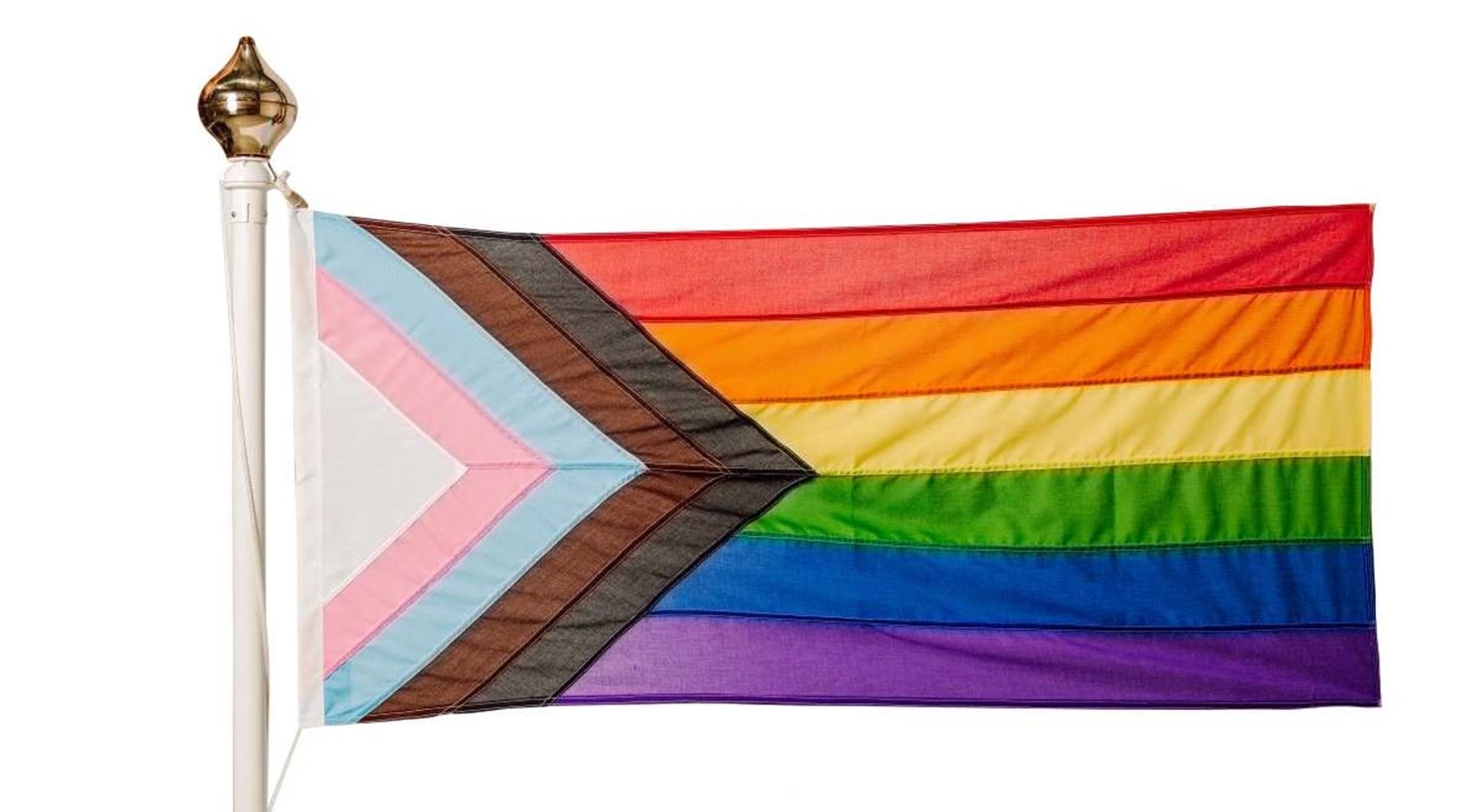
Progress Pride Flag
Designed by: Daniel Quasar
Introduced in: 2018.
About: Showing support and solidarity with marginalised groups, even within the LGBTQ+ community, this design was adopted following a viral Kickstarter campaign. By adding the chevron to the traditional six-colour design, Quasar wanted to highlight the further struggles of queer people of colour, those living with HIV/AIDS, and persons in the trans community.
Order yours here.
Transgender Pride Flag
Designed by: Monica Helms
Introduced in: 2000.
About: The most prominent design used by the Transgender community. The Transgender Pride flag is a symbol of the pride and diversity of the trans community and the fight for transgender rights. The stripes at the top and bottom are light blue, the traditional colour for baby boys. The stripes next to them are pink, the traditional colour for baby girls. The stripe in the middle is white, for those who are transitioning or consider themselves having a neutral or undefined gender.
Order yours here
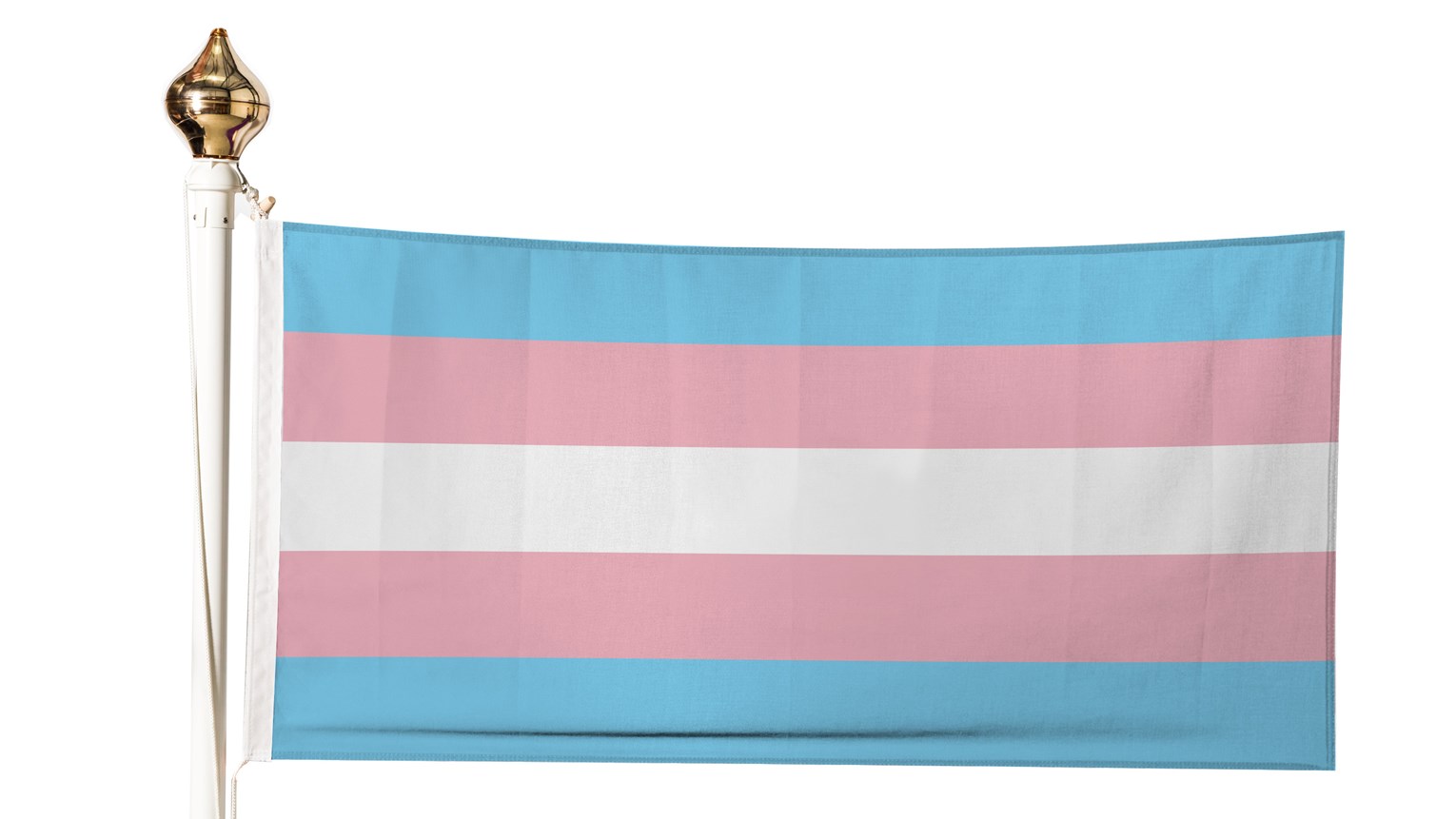
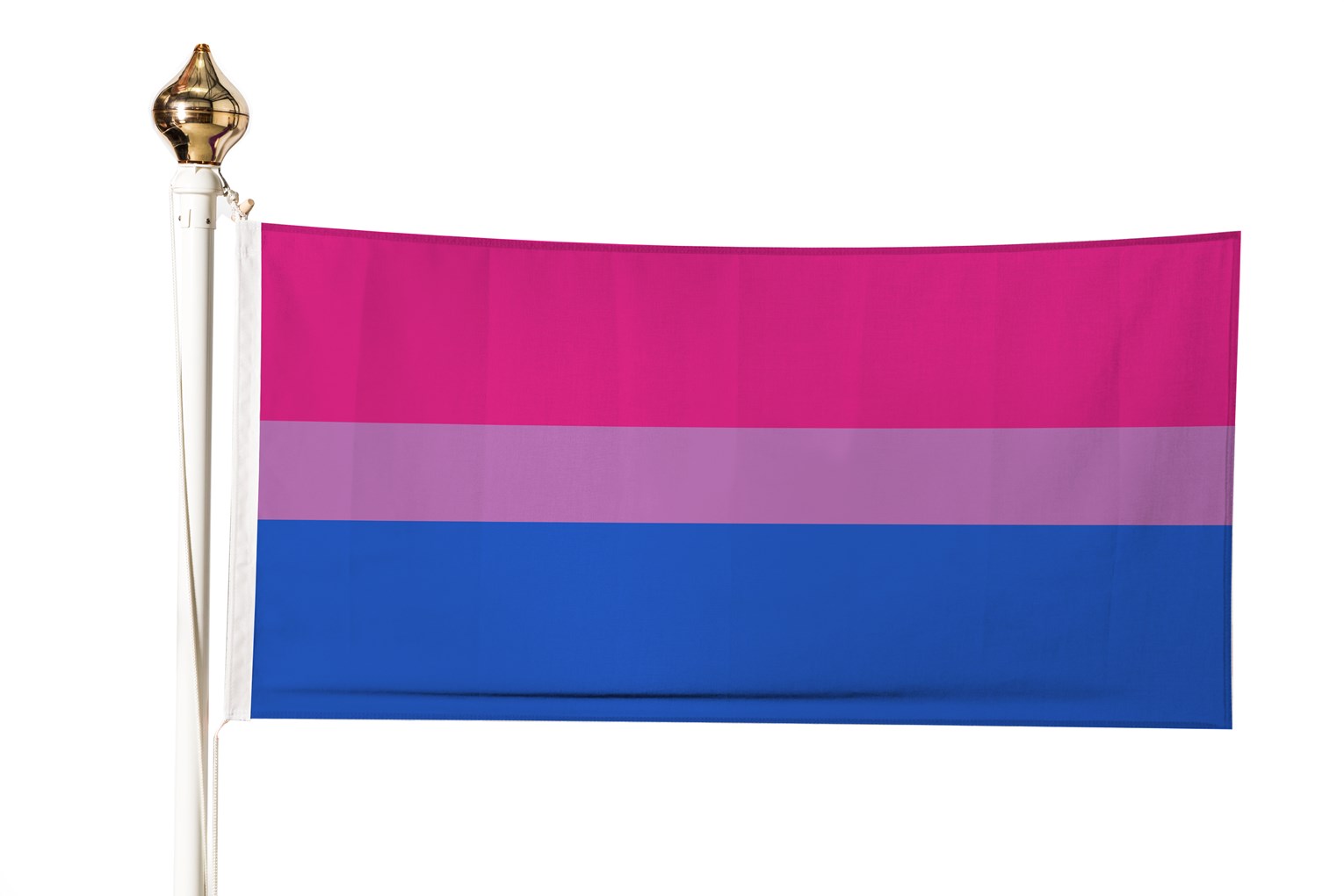
Bisexual Pride Flag
Designed by: Michael Page
Introduced in: 1998.
About: Designed to give further recognition to the Bisexual community both among society as a whole and within the LGBTQ+ community. The pink represents sexual attraction to the same sex, the blue represents sexual attraction to the opposite sex, and the resultant overlap creating the purple represents sexual attraction to 2 or more genders. The purple also represents that the pink and blue can blend unnoticeably and in varying degrees. Much like the colour purple, bisexuality is seen as a spectrum and not as a definitive proportion.
Order yours here.
Intersex Pride Flag
Designed by: OII Australia
Introduced in: 2013.
About: The flag originates from Australia where it was designed to create a symbol or pride for people that are born with variations in sex characteristics including chromosomes, hormones, or genitals. Campaigners and activists speak of the ongoing battle for bodily autonomy and genital integrity and wanted a symbol to go alongside their work. The yellow background stands for gender neutrality and the purple circle is depicted as unbroken and unornamented, symbolising wholeness and completeness.
Order yours here.
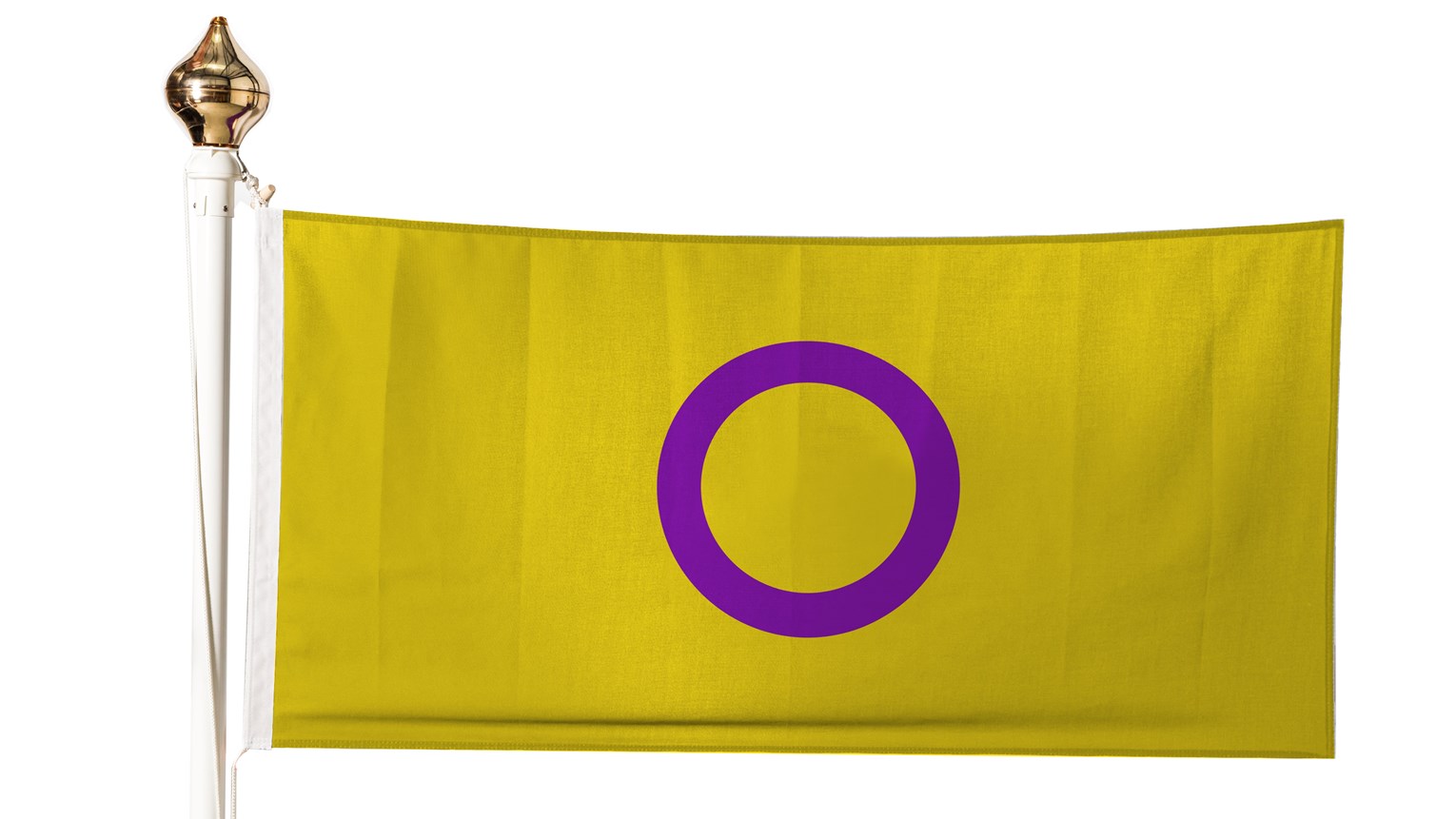
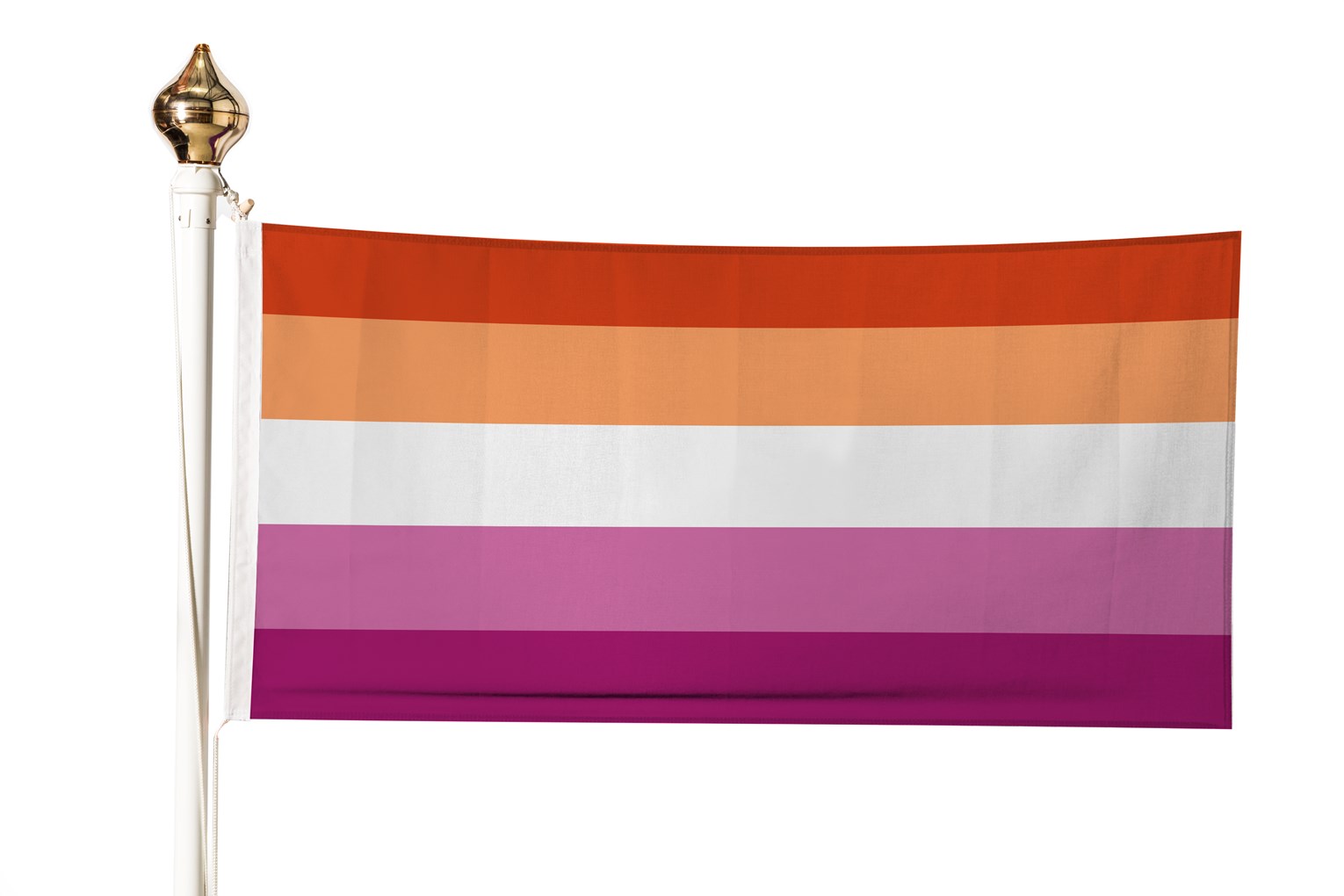
Lesbian Pride Flag
Designed by: Various
Introduced in: 2018.
About: There have been dozens of flags used for the Lesbian community throughout history including the Gilbert Baker design and Lipstick Lesbian Flag. However, as demand for an alternative and more inclusive flag increased, there came several new designs. The most popular is a five-stripe flag using traditionally feminine colours of pink and white, and orange to represent gender-nonconformity and independence from men.
Order yours here
Non-Binary Pride Flag
Designed by: Kyle Rowan
Introduced in: 2014.
About: The non-Binary flag was created to fly alongside the genderqueer flag with the hope more people felt included. It was designed as a symbol of pride and recognition for those whose gender identity does not fit within the traditional male/female binary. The yellow stripe stands for those who fall outside of and without reference to the binary. White is for those with many or all genders and black for those who feel they are without a gender. The purple stripe represents those who identify as a mix of or somewhere between the male and female spectrum.
Order yours here.
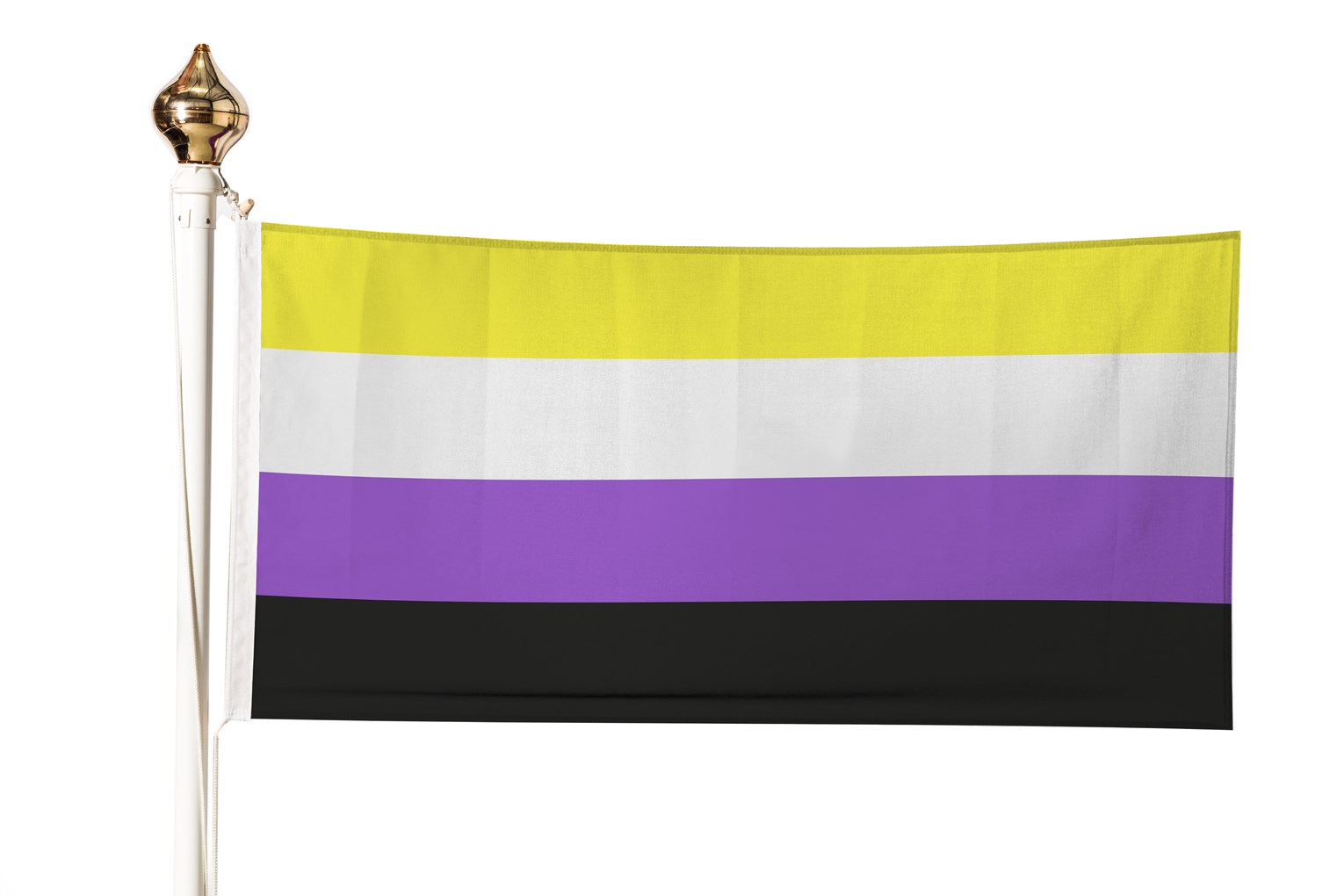
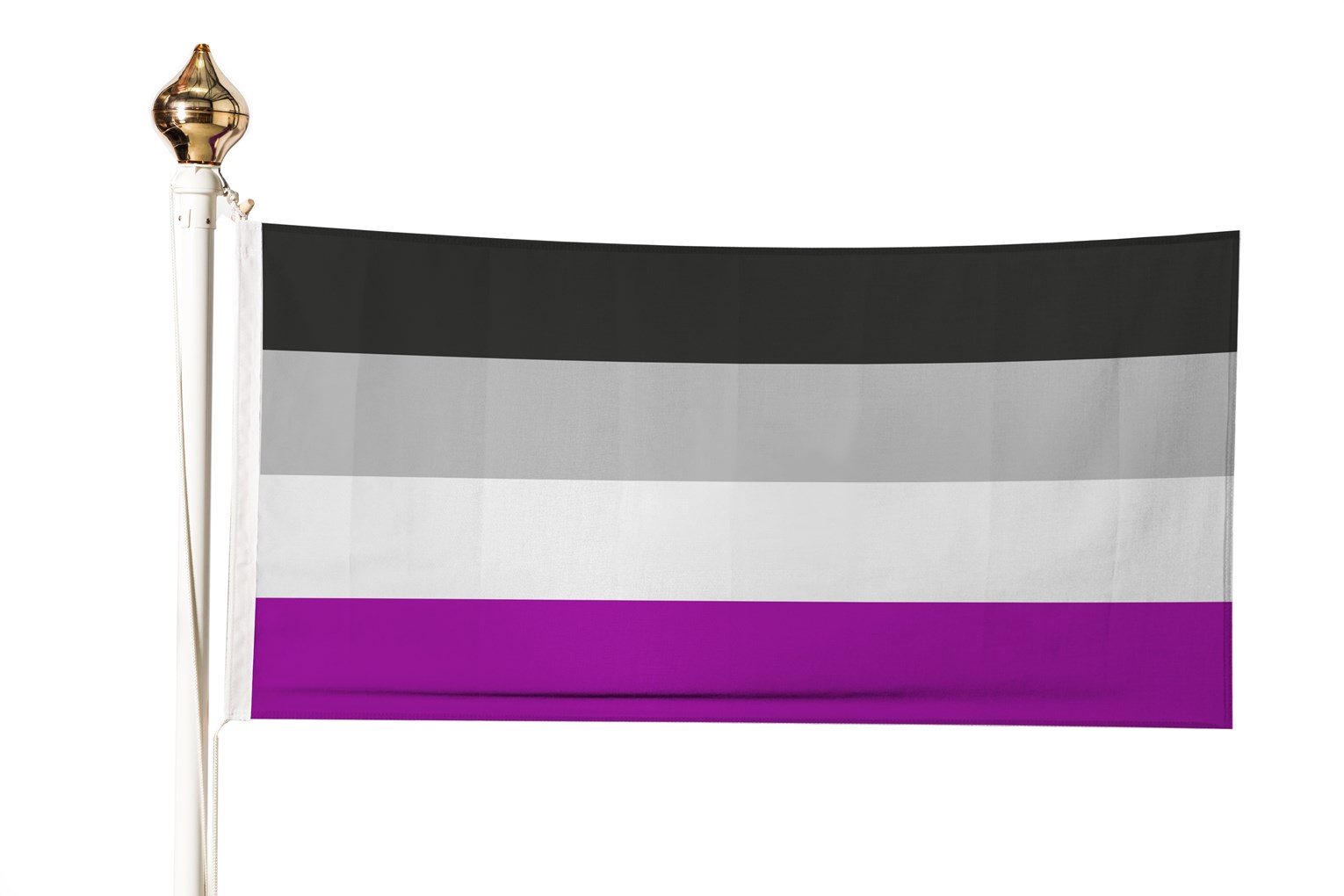
Asexual Pride Flag
Designed by: Asexuality Visibility and Education Network user ‘Standup’.
Introduced in: 2010.
About: Chosen as the winning design in a contest approved by many leading asexual charities and organisations, the design incorporated the colours of the AVEN logo. To act as an emblem and identifier for people who have a lack of sexual attraction to all genders, the flag also incorporates the colour purple to represent the wider LGBTQ+ community and the place Asexual people have there. The black and grey stand for asexuality and demi-sexuality, whilst the white represents non-asexual partners and allies for the community.
Order yours here.
Pansexual Pride Flag
Designed by: Gilbert Baker
Introduced in: 2010.
About: Mirroring the design of the LGBTQ+ flag, the Pansexual flag was designed to increase the recognition and visibility of the pansexual community and to distinguish from Bisexuality. Indicating that pansexuality is the attraction to and having relationships with people regardless of gender or sexuality, the pansexual community aims to challenge existing prejudices even from within the LGBTQ+ community. The magenta stripe represents attraction to those who identify with a female spectrum, the cyan for those who identify on the male spectrum, and the yellow for the attraction to those who are androgynous, agender or non-binary.
Order yours here.
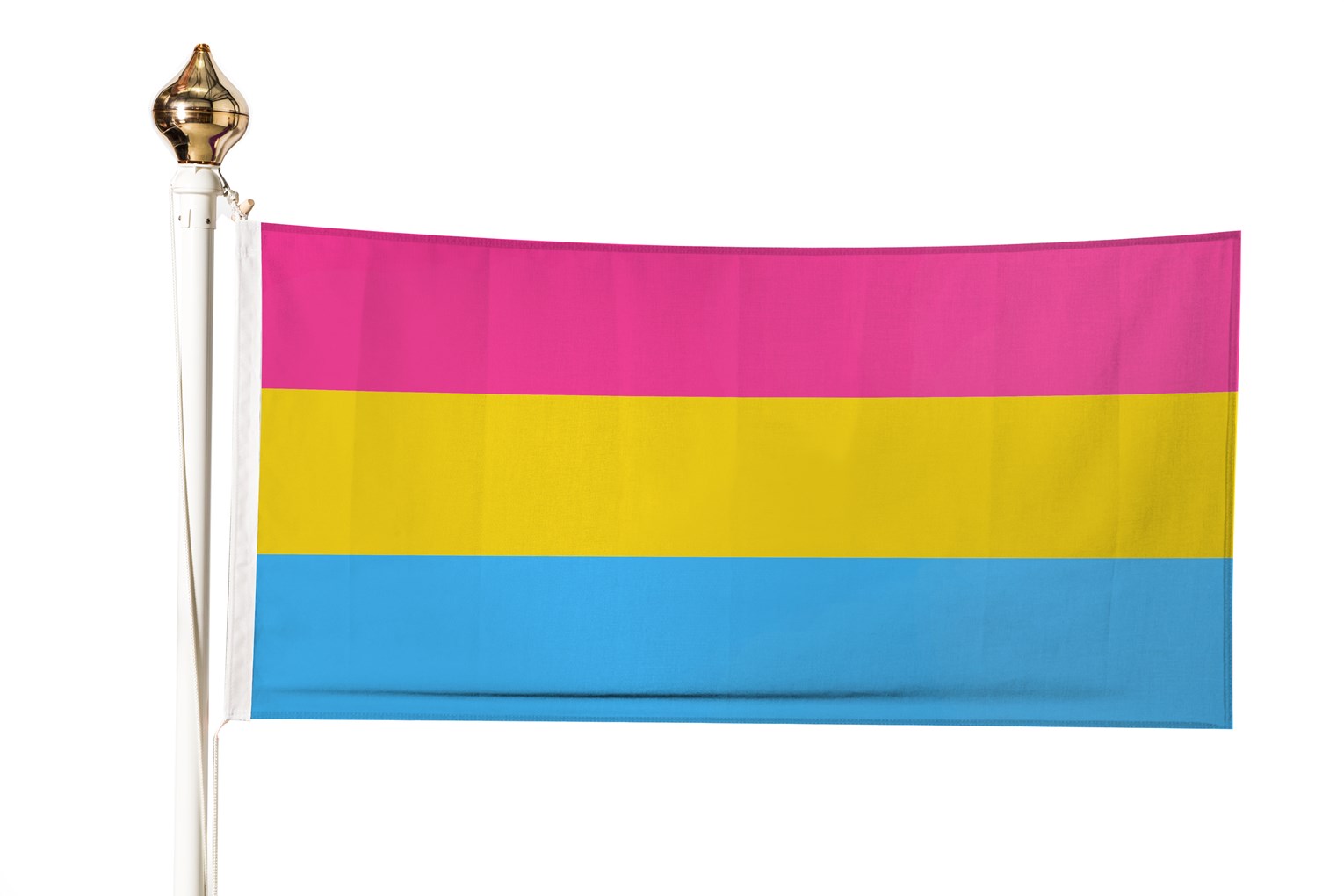
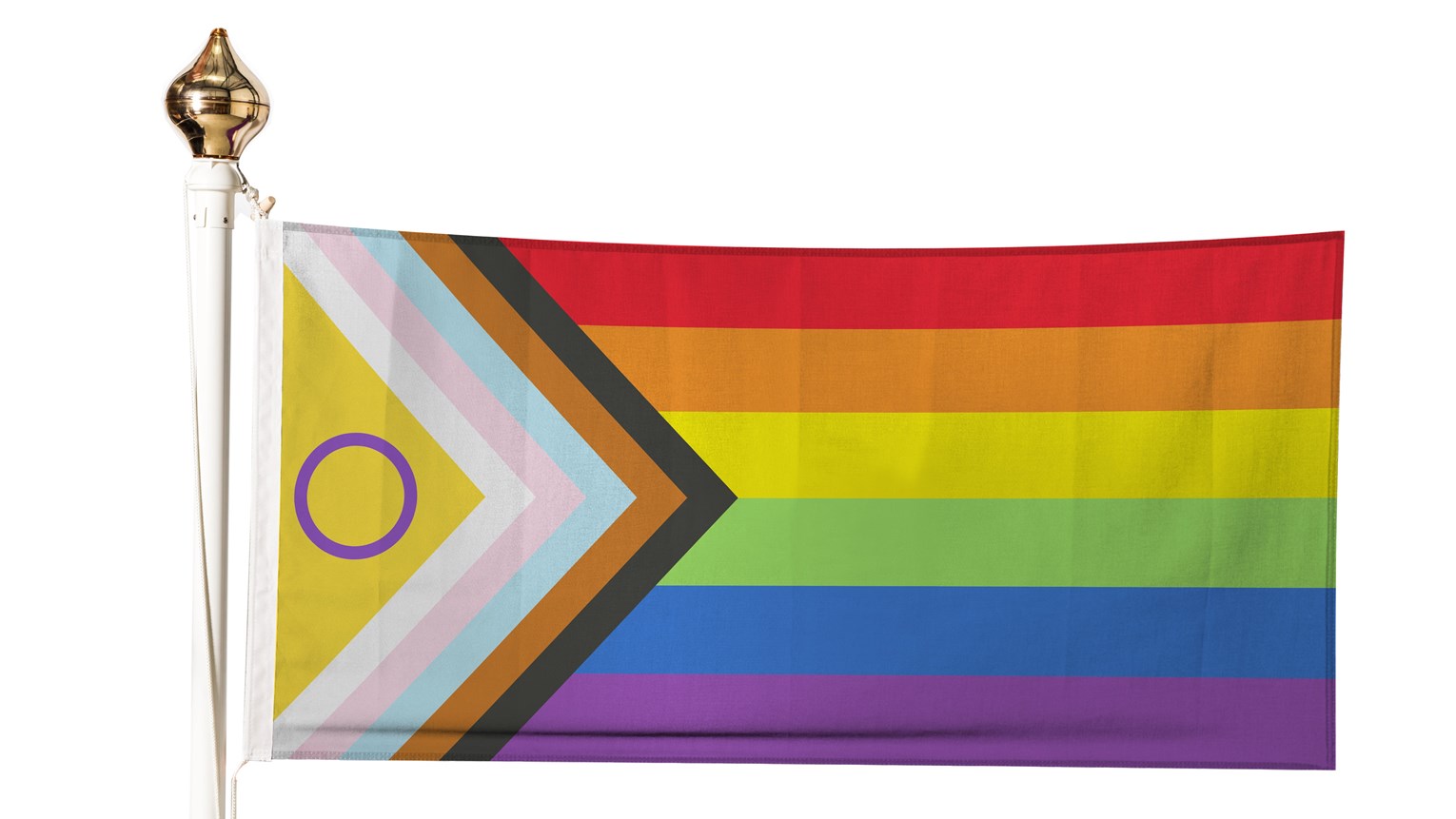
Intersex-Inclusive Progress Pride Flag
Designed by: Valentino Vecchietti
Introduced in: 2021.
About: Intersex columnist and media personality Valentino Vecchietti designed the new rendition of the rainbow Pride flag. The flag was officially unveiled by the advocacy group Intersex Equality Rights UK in late May but has since spread virally on social media. In Vecchietti’s rendition, a purple circle superimposed over a yellow triangle has been added to the chevron on the left half of Quasar’s design — a homage to the popular 2013 intersex flag designed by Australian bioethicist and researcher Morgan Carpenter. The intersex community uses the colours of purple and yellow as an intentional counterpoint to blue and pink, which have traditionally been seen as binary, gendered colours.
Order yours here.
Have we missed any LGBTQ+ flags? Feel free to get in touch with Flagmakers on 01246 472 949 or info@flagmakers.co.uk




